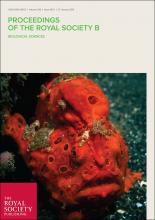Global patterns in threats to vertebrates by biological invasions
Bellard C, Genovesi P, Jeschke JM – 2016
Biological invasions as drivers of biodiversity loss have recently been challenged. Fundamentally, we must know where species that are threatened by invasive alien species (IAS) live, and the degree to which they are threatened. We report the first study linking 1372 vertebrates threatened by more than 200 IAS from the completely revised Global Invasive Species Database. New maps of the vulnerability of threatened vertebrates to IAS permit assessments of whether IAS have a major influence on biodiversity, and if so, which taxonomic groups are threatened and where they are threatened. We found that centres of IAS-threatened vertebrates are concentrated in the Americas, India, Indonesia, Australia and New Zealand. The areas in which IAS-threatened species are located do not fully match the current hotspots of invasions, or the current hotspots of threatened species. The relative importance of biological invasions as drivers of biodiversity loss clearly varies across regions and taxa, and changes over time, with mammals from India, Indonesia, Australia and Europe are increasingly being threatened by IAS. The chytrid fungus primarily threatens amphibians, whereas invasive mammals primarily threaten other vertebrates. The differences in IAS threats between regions and taxa can help efficiently target IAS, which is essential for achieving the Strategic Plan 2020 of the Convention on Biological Diversity.

